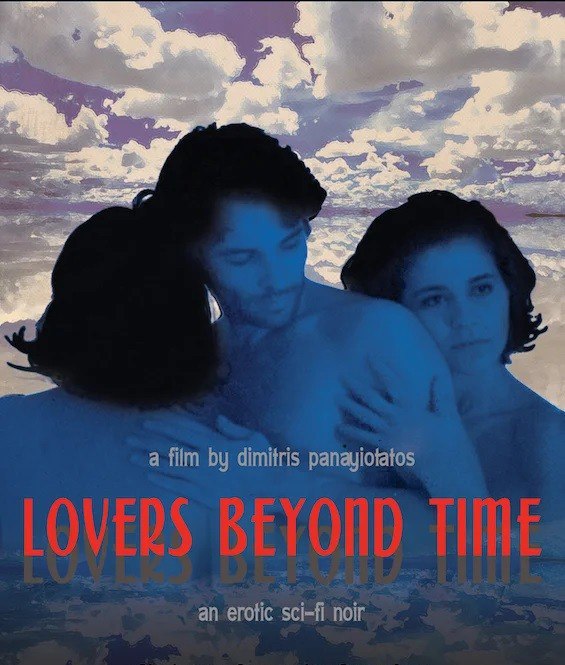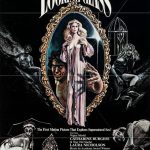Lovers Beyond Time 1990 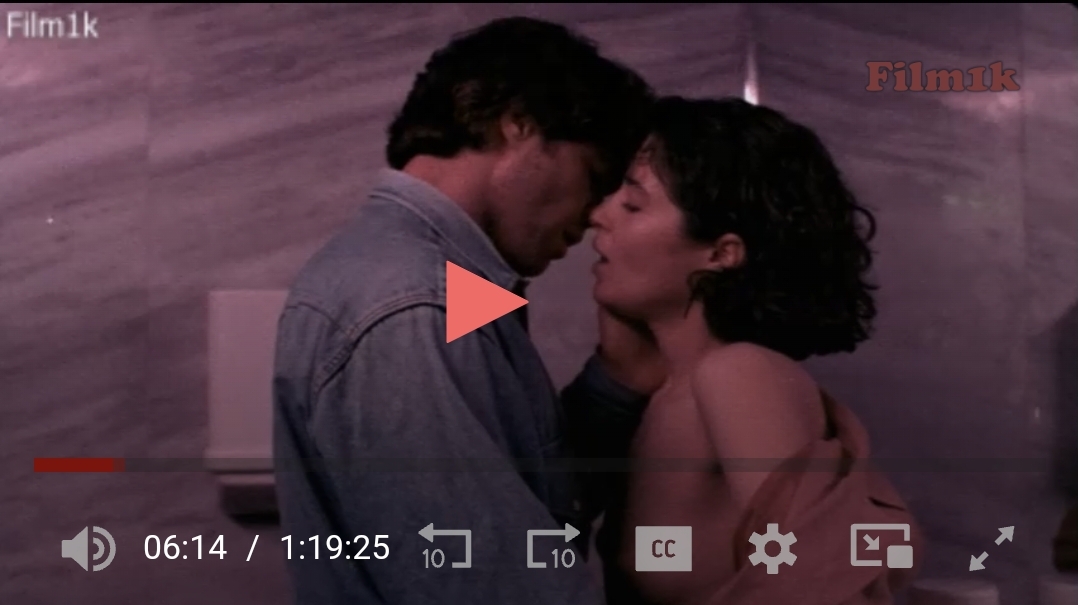
Lovers Beyond Time (1990) – A Review of a Greek Sci-Fi Romance
Lovers Beyond Time (1990), directed by Dimitris Panayiotatos, is a rare gem in the landscape of Greek cinema, a film that ambitiously blends science fiction, romance, and psychological thriller elements into a singular, dreamlike experience. Released under its original title Erastes sti mihani tou hronou (Lovers in the Time Machine), this 85-minute feature stands out as a bold experiment in a country where genre filmmaking, particularly in science fiction and fantasy, has historically been marginalized. With a modest budget and a vision that leans heavily on atmosphere over narrative coherence, Panayiotatos crafts a film that is as enigmatic as it is polarizing, offering a unique contribution to the global cinematic tapestry of the early 1990s. This review explores the film’s narrative, themes, visual style, performances, and cultural significance, while situating it within the broader context of Greek and international cinema.
Plot Overview
The story of Lovers Beyond Time centers on Sylvia (Christine Skaza), a young woman entangled in an intense relationship with Angelos (Benoit Roussel), a brooding and obsessive musician-scientist. The film opens with their breakup, as Sylvia finds Angelos’ intensity overwhelming, prompting her to sever ties during a dramatic public scene. Three years later, Sylvia has rebuilt her life, working at a record company and living with a kind-hearted doctor, Mihalis (Takis Moschos). However, her newfound stability is disrupted by a series of inexplicable events: friends and colleagues meet untimely ends, and Sylvia experiences mysterious, involuntary sensations that unsettle her daily routine. These disturbances are linked to a shadowy figure, a musician named Zinos Flerianos, whom Sylvia is tasked with tracking down for her job.
As the narrative unfolds, it becomes clear that Angelos, presumed dead, has not vanished from Sylvia’s life. Through the use of a time machine—a device he has invented in his relentless pursuit of control—he manipulates events across time and space, orchestrating the chaos that surrounds Sylvia. The film weaves a complex web of time travel, jealousy, and obsession, culminating in a surreal and tragic finale that challenges conventional notions of love and agency. While the plot is deliberately fragmented, it prioritizes mood and mystery over linear storytelling, inviting viewers to piece together its puzzle-like structure.
Themes and Symbolism
At its core, Lovers Beyond Time is a meditation on the destructive power of obsession and the fluidity of time. Angelos’ time machine serves as a metaphor for his inability to let go, a technological extension of his desire to rewrite the past and control the future. The film explores how love, when twisted into possessiveness, can transcend temporal boundaries, becoming both a haunting presence and a destabilizing force. Sylvia, caught in the crosshairs of Angelos’ manipulations, embodies the struggle for autonomy in the face of an unrelenting past.
The theme of time is central, not only in the literal sense of time travel but also in the philosophical sense of how memory and regret shape human experience. The film’s non-linear structure mirrors the disorientation of its characters, as moments from the past bleed into the present, creating a liminal space where reality and illusion blur. This temporal ambiguity is enhanced by the film’s dreamlike quality, which evokes the sensation of being trapped in a memory or a nightmare.
Another significant theme is the intersection of technology and human emotion. Angelos’ time machine, a product of his scientific brilliance, becomes a tool of emotional warfare, highlighting the dangers of wielding power without restraint. In this sense, the film resonates with broader science fiction traditions, particularly those of the 1980s and early 1990s, where technology often serves as a double-edged sword (Terminator, Back to the Future). However, Lovers Beyond Time distinguishes itself by grounding its sci-fi premise in a deeply personal, almost operatic romance, rather than in action or spectacle.
The film also touches on gender dynamics, though not always with clarity or sensitivity. Sylvia’s character oscillates between victim and agent, as she navigates the consequences of Angelos’ actions while grappling with her own desires and fears. Some critics have noted that the film’s portrayal of Sylvia’s experiences borders on exploitative, framing her as a passive recipient of Angelos’ interventions. However, others argue that her journey reflects a quiet resilience, as she seeks to reclaim her life from the shadow of her former lover. This tension—between empowerment and objectification—remains a point of contention in discussions of the film’s legacy.
Visual Style and Cinematography
One of the standout features of Lovers Beyond Time is its striking visual style, which compensates for its modest production values with bold aesthetic choices. Panayiotatos, working with cinematographer Thymios Bakatakis, employs a palette of neon hues—electric blues, mauves, and pinks—that bathe the film in an otherworldly glow. These colors, combined with angular set designs and sleek modernist interiors, create a futuristic ambiance that feels both retro and timeless. The film’s aesthetic is reminiscent of 1980s new wave music videos or the neon-drenched noir of films like Blade Runner, yet it retains a distinctly Greek flavor through its use of Athens’ urban landscapes and stark, minimalist architecture.
The lighting is particularly noteworthy, with scenes drenched in colored gels that evoke a sense of unreality. A recurring setting, described by reviewers as bathed in “electric mauve,” becomes a visual motif, symbolizing the intersection of Sylvia’s reality and Angelos’ temporal intrusions. The camera work is deliberate, often lingering on close-ups of faces or objects to heighten emotional intensity or underscore narrative ambiguity. Slow pans and static shots contribute to the film’s hypnotic pace, though some viewers may find the deliberate tempo soporific.
The film’s production design, while limited by budget, is resourceful. The time machine itself—a blinking, mechanical contraption surrounded by neon-lit panels—looks appropriately makeshift, reflecting Angelos’ obsessive ingenuity rather than a polished sci-fi prop. The contrast between the futuristic elements and the everyday settings (record offices, apartments, concert venues) enhances the film’s surreal tone, grounding its fantastical premise in a recognizable world.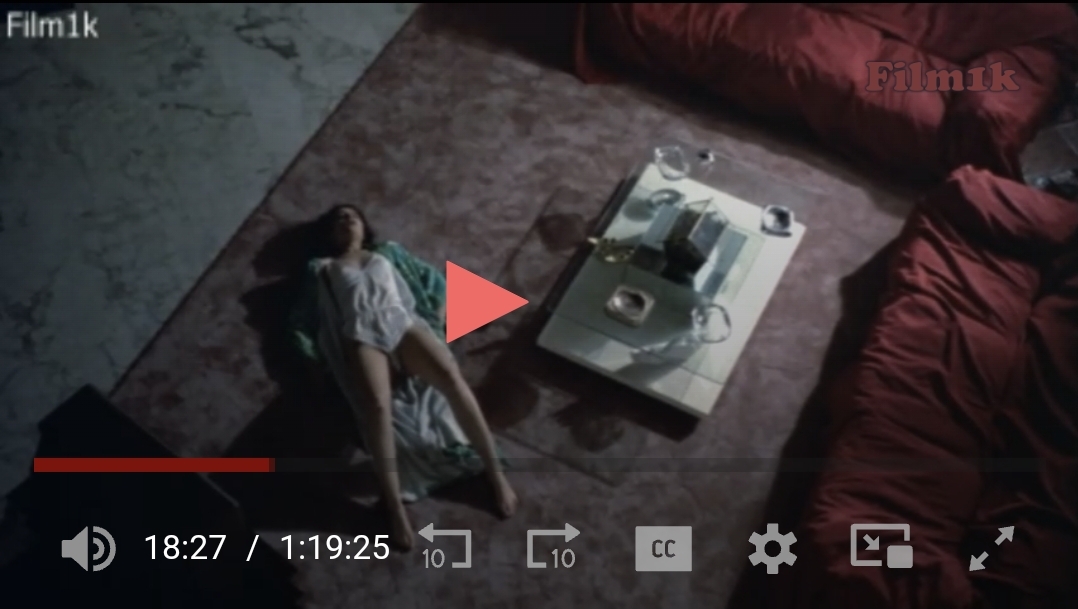

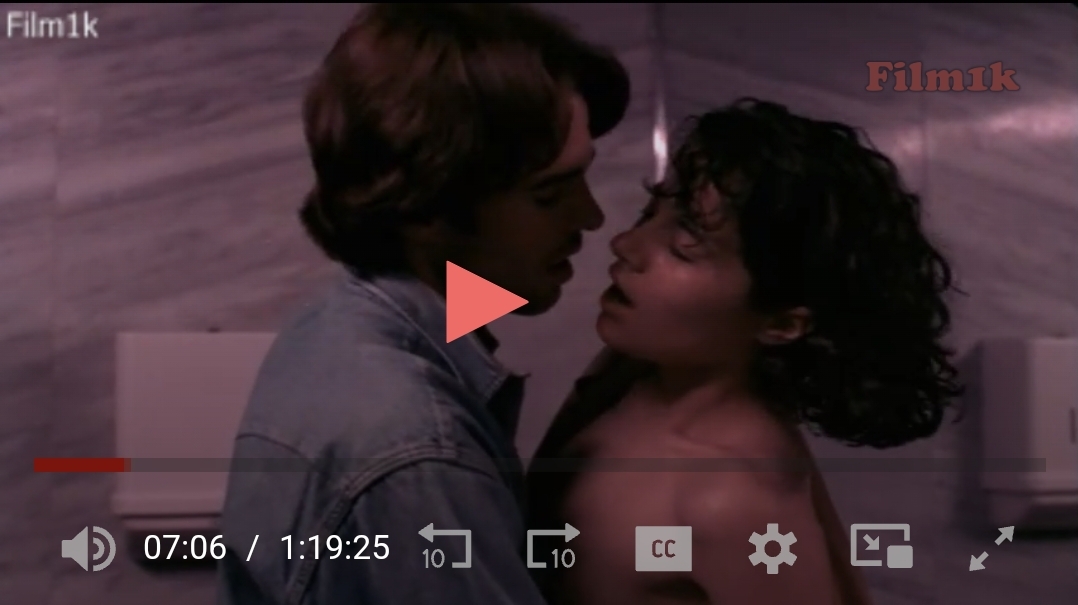
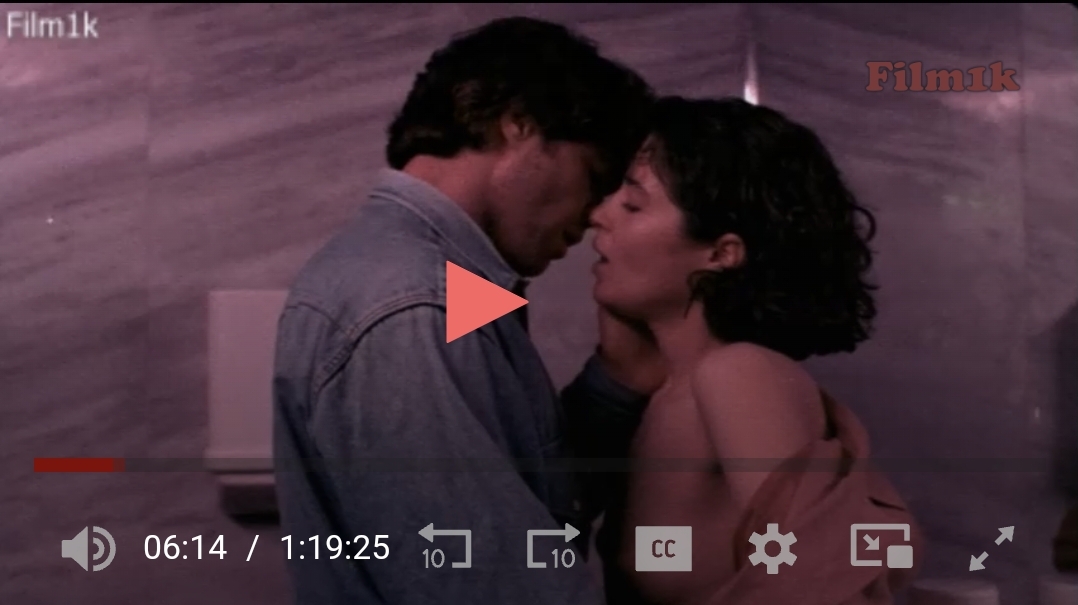
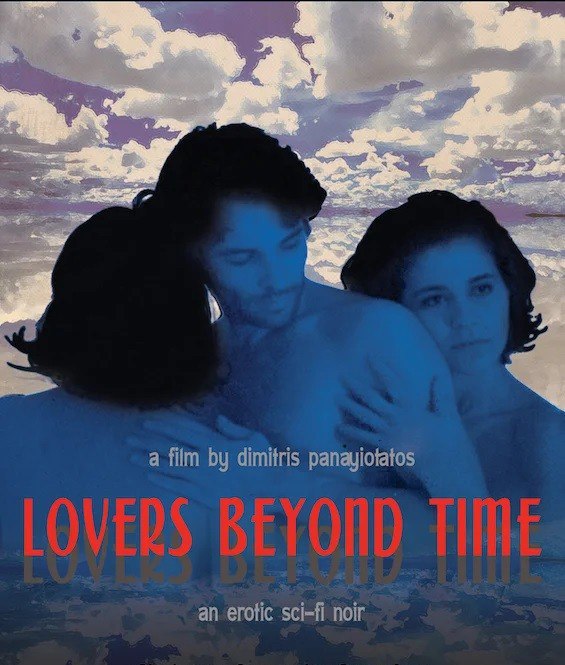





Soundtrack and Sound Design
The soundtrack, composed by Yannis Zouganelis, is a critical component of the film’s atmosphere. Characterized by droning synths and ethereal melodies, it evokes the dreamy, melancholic soundscapes of 1980s new wave and ambient music. Reviewers have compared the score to the output of labels like 4AD, noting its ability to envelop viewers in a trance-like state. The music is both seductive and unsettling, mirroring the film’s exploration of love’s dual nature as a source of comfort and torment.
Sound design plays an equally important role, with layered effects that amplify the film’s eerie mood. The hum of the time machine, the distorted echoes of voices, and the sudden shifts in ambient noise create a sense of dislocation, as if the fabric of reality is fraying. These auditory cues are particularly effective in scenes where Sylvia experiences her mysterious sensations, immersing the audience in her confusion and vulnerability.
Performances
The performances in Lovers Beyond Time are a mixed bag, reflecting the film’s low-budget origins and its reliance on mood over polished execution. Christine Skaza, as Sylvia, delivers a performance that is both enigmatic and restrained. Her expressive eyes convey a range of emotions—fear, longing, defiance—though her dialogue delivery can feel stilted, possibly due to the challenges of performing in Greek as a non-native speaker. Skaza’s physical presence is magnetic, and she anchors the film’s emotional core, even when the script leaves her character underdeveloped.
Benoit Roussel’s portrayal of Angelos is intense but polarizing. He imbues the character with a smoldering charisma that borders on menacing, effectively capturing the obsessive drive that fuels the narrative. However, some reviewers have criticized his performance as overly theatrical, arguing that it veers into caricature, particularly in scenes meant to highlight Angelos’ romantic desperation. The chemistry between Skaza and Roussel is palpable, though it is undercut by the film’s tendency to romanticize Angelos’ toxic behavior.
Takis Moschos, as Mihalis, provides a grounded counterpoint to the central duo’s intensity. His portrayal of the mild-mannered doctor is understated, offering a glimpse of the stable life Sylvia seeks but cannot fully embrace. The supporting cast, including Arto Apartian and Nantia Deliyanni, delivers competent performances, though their roles are limited by the script’s focus on the Sylvia-Angelos dynamic.
Cultural and Historical Context
Lovers Beyond Time occupies a unique place in Greek cinema, a field traditionally dominated by arthouse dramas (e.g., Theo Angelopoulos) and comedies. Genre filmmaking, particularly in science fiction and fantasy, was rare in Greece during the 1980s and 1990s, due to limited funding and a cultural preference for realist narratives. Panayiotatos, one of the few Greek directors to specialize in noir, fantasy, and sci-fi, faced significant challenges in bringing this vision to life. As he discusses in a 2009 documentary included with the film’s DVD release, genre productions were often marginalized in Greece, lacking the institutional support afforded to more “serious” cinema.
The film’s release in 1990 places it at the tail end of a decade marked by bold experimentation in global genre cinema. The 1980s saw the rise of cyberpunk, time-travel narratives, and erotic thrillers, influences that are evident in Lovers Beyond Time. Panayiotatos has cited Back to the Future as an inspiration, though his film eschews that movie’s comedic tone for a darker, more introspective approach. Comparisons have also been drawn to the works of David Cronenberg and Jean Rollin, whose explorations of body horror and poetic surrealism resonate with the film’s unsettling blend of science and desire.
The film’s international reception was limited, partly due to its niche appeal and the challenges of distributing Greek genre films abroad. However, its release on DVD by Mondo Macabro, a label specializing in cult and obscure cinema, has garnered a small but dedicated following. Online platforms like Letterboxd reveal a divided audience: some praise the film’s “vibey” atmosphere and bold ambition, while others find its pacing sluggish and its narrative incoherent. This polarization underscores the film’s status as a cult object, appreciated more for its mood than its accessibility.
Strengths and Weaknesses
The film’s greatest strength lies in its atmosphere. The combination of neon visuals, synth-driven music, and fragmented storytelling creates a hypnotic, almost hallucinatory experience that lingers long after the credits roll. For viewers attuned to its wavelength, Lovers Beyond Time is a captivating dive into the liminal space between love and obsession, reality and fantasy. Its willingness to embrace ambiguity and prioritize mood over plot coherence is admirable, particularly within the constraints of Greek cinema’s limited genre ecosystem.
However, the film is not without flaws. Its pacing, often described as languid, can test the patience of viewers accustomed to tighter narratives. The performances, while evocative, occasionally falter under the weight of the script’s melodramatic dialogue. The film’s treatment of Sylvia’s character, particularly in scenes that blur consent and coercion, has drawn criticism for its ethical ambiguity. Additionally, the low budget is occasionally evident in the rudimentary special effects and uneven production values, which may detract from the immersion for some audiences.
Legacy and Conclusion
Lovers Beyond Time is a film that defies easy categorization, blending science fiction, romance, and psychological drama into a singular, if imperfect, vision. It is a testament to Dimitris Panayiotatos’ ambition and resourcefulness, offering a rare glimpse into Greek genre cinema at a time when such projects were outliers. While it may not satisfy viewers seeking a conventional narrative or polished production, it rewards those willing to surrender to its dreamlike rhythms and provocative themes.
For fans of cult cinema, Lovers Beyond Time is a must-see, a film that captures the experimental spirit of the late 1980s and early 1990s while carving out its own niche. Its exploration of love, time, and obsession remains relevant, inviting reflection on the ways we grapple with the past and its hold over the present. As a piece of cinematic history, it stands as a bold reminder of the power of small-scale filmmaking to push boundaries and provoke thought.
Word Count: 2,137
Sources:
-
Letterboxd reviews and synopsis
-
IMDb plot summary and production details
-
Mondo Macabro DVD notes and director interview
DVDDrive-In review
